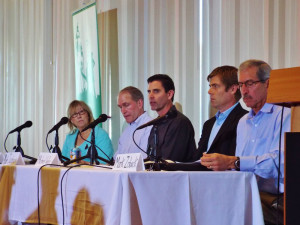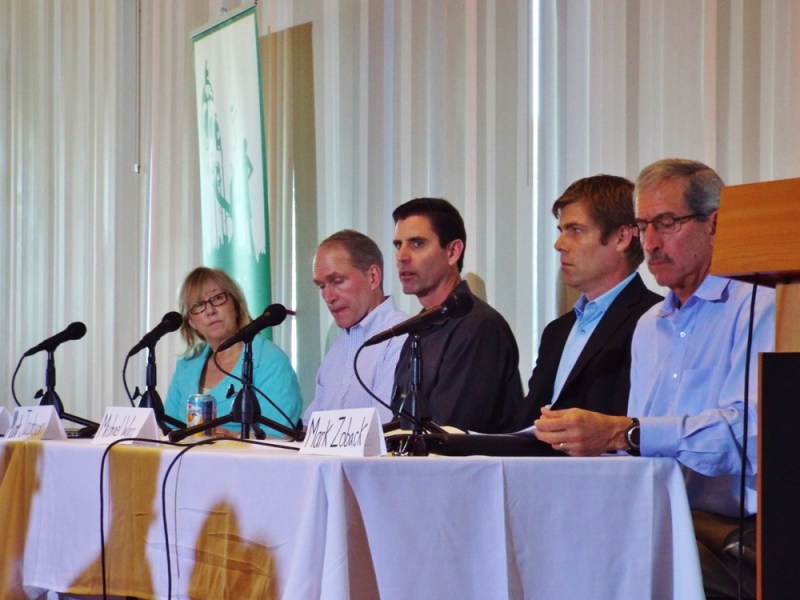On Tuesday at Tresidder Union, a panel of five Stanford professors discussed hydraulic fracturing, also known as fracking, and its potential as an alternative energy source. Hosted by Students for a Sustainable Stanford and moderated by Pamela Matson, dean of the School of Earth Sciences, the panel focused on current energy sources and implications.
Fracking is the use of pressurized water and chemicals to create or widen fractures in the Earth’s surface to reach oil or natural gas deep underground. Given the Earth’s diminishing energy reserves, this newly accessible source of fuel promises an alternative to coal consumption. The panel discussion emphasized, however, that with a new energy source come advantages and disadvantages for the environment.

The five professors, with backgrounds ranging from geophysics and environmental law to civil and environmental engineering, shared their thoughts on alternative energy sources, focusing on fracking and its implications in California and the United States.
Those favoring fracking support the new technology because it will lower carbon emissions and enable the United States to be less dependent on other forms of energy. Fracking opponents generally cite the environmental issues, social ramifications and methane emissions that come with drawing natural gas from deep in the earth.
“The question is to drill or not to drill,” said Michael Wara, associate professor of law, who specializes in energy and environmental law.
Creating holes in the earth causes problems of its own, according to the panelists, such as the potential to trigger more earthquakes today and in the future.
Apart from the actual drilling, there are other drawbacks of fracking. For example, the consumption of natural gas releases methane and other harmful chemicals into the air.
Mark Jacobson ’87 M.S. ’88, a professor of civil and environmental engineering who uses computer simulators to detect pollution and climate changes, addressed the energy debate of coal versus natural gas.
“While coal produces more carbon dioxide, natural gas releases more ammonia, methane and carbon monoxide,” Jacobson said.
Following the panel discussion, the event was opened to audience questions.
An audience member asked about recent methane leakage from fracking, to which Jackson responded that the leakage occurred from the pipes used to transport the natural gas. While the current method of transporting the gas through old pipes can lead to exposure of harmful chemicals into the air, Jackson noted that a number of states plan to follow the example of a cast iron pipe replacement program undertaken in Ohio.
“[We] need better ways to detect leaks and treat them,” added Sally Benson, professor of energy resources engineering.
Preventing leaks and using sea water instead of fresh water in the fracking process could promise a safer and more appealing future for fracking, according to panelists.
Mark Zoback M.S. ’73 Ph.D ’75, professor of geophysics, also suggested “establishing a long term goal (of reducing carbon emissions) by creating a carbon tax.”
This tax would promote alternative sources of energy, which could prove less hazardous to the environment.
Contact Katherine Carr at [email protected].
